Saturday, February 14, 2004
Silvered Æ antoninianus, Gallienus, Mediolanum, Göbl 1169m
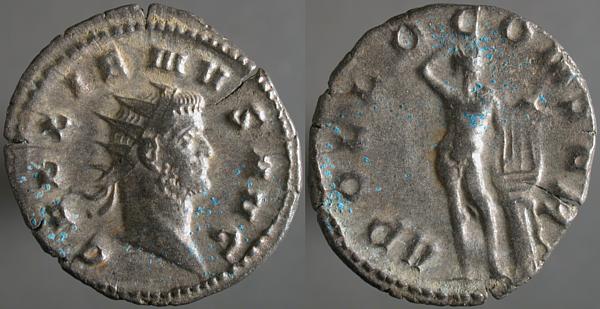
GALLIENVS AVG, Radiate head right | APOLLO CONSER, Apollo standing facing, head right, hand on head left, reaching for lyre on cippa right.
Such an unusual god, Apollo. Mild-natured, most of the time, but with quite a temper. A satyr who became a victim of that temper tomorrow.
Friday, February 13, 2004
Æ21, Alexandria Troas, SNG Copenhagen 100var
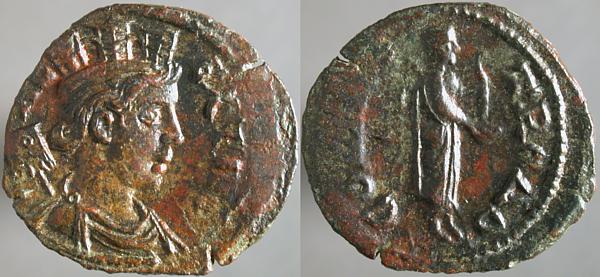
Quasi-autonomous, mid-3rd C.
AL_EX TRO, Turreted draped bust of Tyche right, vexillum behind | COL AVG TROAD, Apollo Smintheus standing right, holding bow and patera right.
There remains some confusion about the status of quasi-autonomous coins like this; those that do not display the name or image of the Emperor or any member of his family. Athens under Roman rule, in particular, never issued anything but quasi-autonomous coins, and it has been believed that this was a privilege, granted and withdrawn at the Emperor's whim. Lately, that belief has fallen out of fashion, although there was clearly something special about Athens.
Alexandria Troas, like many cities, issued more coins with Imperial portraits than not, but the quasi-autonomous issues were common.
The reverse shown here features a statue of Apollo Smintheus, Apollo the mouse-hunter.
Thursday, February 12, 2004
Silvered Æ antoninianus, Gallienus, Rome, Göbl 493q¹
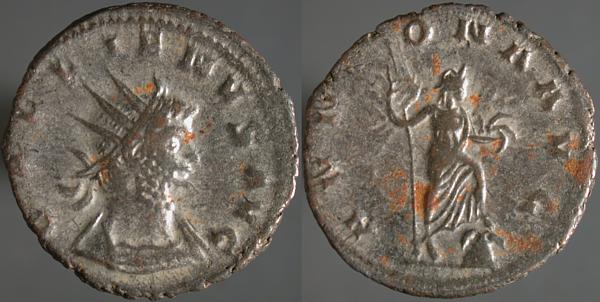
GALLIENVS AVG, Radiate cuirassed bust right | ANNONA AVG, Annona standing facing on modius right, head right, holding scepter left and ears of grain right.
The Göbl book is, in most cases, extremely precise in distinguishing different types, but this unusual type, with Annona standing on a modius, a basket for measuring grain, is lumped with a more conventional type with her standing on a prow. The plate for this coin does show the type, but no mention seems to be made anywhere in the text.
A few days after I received this coin, while I was still puzzled about it, someone on the discussion boards at Forvm Ancient Coins asked about another example, and some of my questions were answered even before I'd fully formed them.
Wednesday, February 11, 2004
Peter Rosa test strike of obverse die for Thasos stater, on US cent
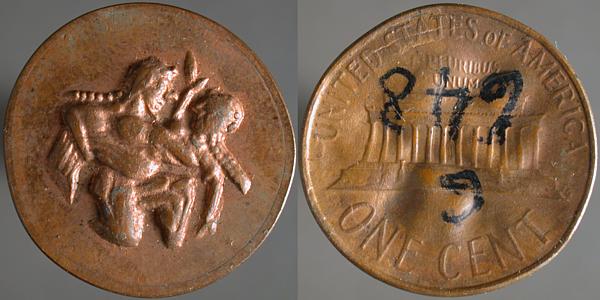
Thasos, a Thracian island, produced coins with this design at the end of the 6th century BCE. The career of Peter Rosa, a 20th century American copyist, is covered in some detail in Wayne Sayles "Classical Deception". This piece, from the Rosa estate, is a test strike of the die for his copies of the Thasos stater, using a US cent as a blank.
Tuesday, February 10, 2004
Æ21, Alexandria Troas, Gallienus, Bellinger A458
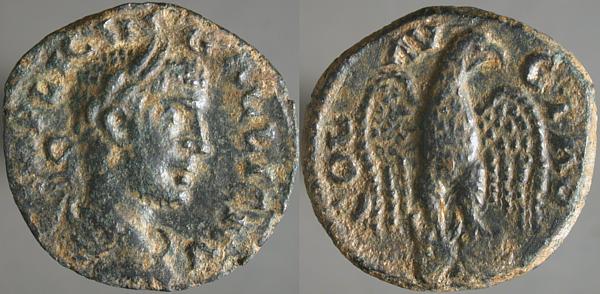
IMP LICIN GALLIENV, Laureate draped bust right | COL AV_G TRO, Eagle standing facing on bucranium, head right, wings spread.
The same eagle as Sunday, before taking off.
Update: changed from less specific attribution "SNG Copenhagen 209var"
Monday, February 09, 2004
Silvered Æ antoninianus, Gallienus, Siscia, Göbl 1426k
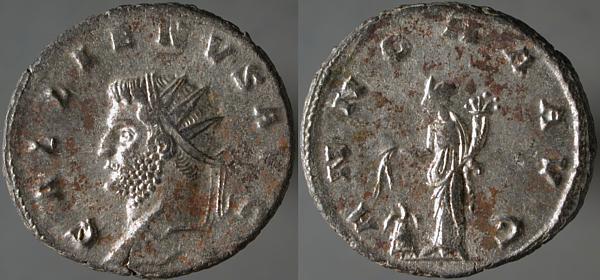
GALLIENVS AVG, Radiate head left | ANNONA AVG, Annona standing facing, head left, holding cornucopia right and grain ears over a modius left.
Originally the personification of the produce of the year, Annona became the personification of the corn dole, and of the annual arrival, from overseas provinces, of the grain that permitted that subsidy.
Sunday, February 08, 2004
Æ21, Alexandria Troas, Gallienus, SNG Copenhagen 196
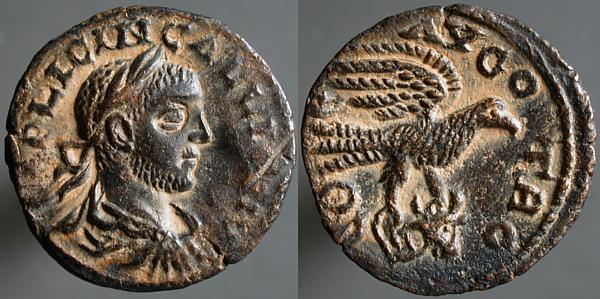
IMP LICIN GALLIENV, Laureate draped bust right | CO AVGO TRO, Eagle flying right carrying bucranium.
Alexandria Troas did use other reverses, ones that didn't feature horses. Here an eagle flies with a bull's skull in its talons.

